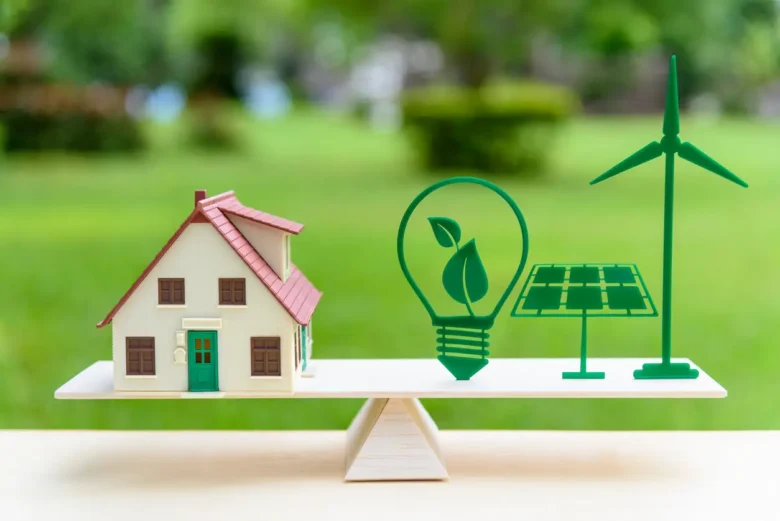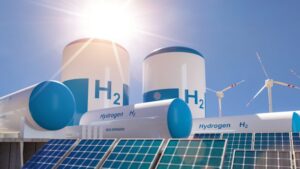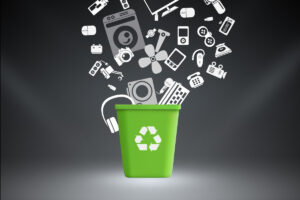Energy efficiency is one of the most effective ways to minimize energy waste, reduce utility bills, and contribute to the fight against climate change. By investing in energy-efficient upgrades, homeowners not only create a more comfortable living environment but also reduce their carbon footprint. A greener home isn’t just about helping the planet—it’s about creating long-term savings and sustainability. By understanding the top energy-efficient upgrades, you can transform your home into a haven of both comfort and environmental consciousness.
Upgrading Insulation for Energy Savings
Proper insulation can make an incredible difference in energy usage. Without sufficient insulation, homes lose heat in the winter and trap it in during the summer, leading to higher energy bills and an inconsistent indoor temperature. Upgrading attic, wall, or basement insulation helps seal in the conditioned air, reducing the workload for HVAC systems. Materials like spray foam, fiberglass, and cellulose are cost-effective and reliable choices for insulation upgrades. Investing in insulation improvements leads to significant reductions in energy consumption while enhancing indoor comfort year-round.
Energy-Efficient Windows and Doors
Windows and doors are some of the biggest culprits when it comes to energy loss in homes. Non-insulated or old models can lead to drafts and leaks, driving up heating and cooling costs. Modern energy-efficient windows and doors, equipped with features like double or triple glazing, low-emissivity coatings, and weather-resistant seals, prevent heat transfer and air leakage. Replacing outdated alternatives with energy-efficient models not only helps reduce energy waste but also enhances the aesthetic appeal of your home while increasing its overall value.
Smart Thermostats and Energy Management
A smart thermostat is more than just a futuristic gadget—it’s a powerful tool for managing and reducing energy consumption. By learning your household’s habits and preferences, these devices optimize temperature settings for maximum efficiency. Some models allow users to control indoor climates remotely through smartphones, ensuring no energy is wasted on heating or cooling unoccupied spaces. Smart energy management systems can further amplify savings by tracking usage patterns and suggesting actionable steps for improvement. Adding these technologies can help homeowners save hundreds on annual energy bills.
Energy-Efficient Lighting Solutions
Traditional incandescent bulbs are energy hogs that contribute to high electricity costs. Switching to energy-efficient lighting such as LED or CFL bulbs can cut energy usage by as much as 75%. These modern lighting options not only consume less power but also last significantly longer than traditional bulbs, reducing the frequency of replacements. Implementing smart lighting systems with motion sensors and timers further improves efficiency by ensuring lights are only active when necessary. From ambient lighting solutions to task-specific options, homeowners can achieve their desired aesthetic while staying committed to energy conservation.
Water Heating Efficiency Upgrades
Water heating accounts for a significant portion of residential energy consumption, making upgrades to this area highly impactful. Traditional water heaters often lose heat during standby periods, driving up energy costs. Tankless water heaters or high-efficiency models featuring insulation and advanced heating technologies can solve this issue. Solar water heaters offer another viable solution, harnessing renewable energy to power your water needs. Reducing water waste by installing low-flow fixtures or insulative pipe covers adds an extra layer of efficiency to your home’s water system.
Renewable Energy Options for Homes
For homeowners seeking a transformative step toward energy efficiency, renewable energy is the way forward. Solar panels allow you to generate your own electricity, significantly reducing dependency on conventional energy sources. Wind turbines or geothermal systems can further diversify renewable energy options based on your property location. While the upfront investment in renewable energy systems might seem high, government incentives and lower utility bills often offset these costs over time. Investing in renewable energy doesn’t just save energy—it makes your household part of the larger solution.
Energy-Efficient Appliances
Replacing outdated appliances with energy-efficient models is an approachable yet impactful way to lower energy consumption. Energy Star-rated appliances like refrigerators, washing machines, and dishwashers consume less electricity and water, ensuring sustainable home operations. Although the initial cost might be higher, the long-term savings in utility bills and improved performance make the upgrade worthwhile. An energy-efficient appliance doesn’t simply perform better—it aligns with your goal of creating a greener home.
Landscaping for Energy Conservation
Strategic landscaping goes a long way in optimizing your home’s energy consumption. Planting trees or shrubs around your property can provide shade in the summer and wind insulation during winter, reducing heating and cooling demands. Ground covers, such as shrubs and mulch, help maintain soil moisture, indirectly lowering energy spent on irrigation. Additionally, using reflective materials or natural patterns for outdoor surfaces can minimize heat absorption. By designing your outdoor areas thoughtfully, you can maximize energy conservation while enjoying a beautiful and functional property.
FAQs
1. Do energy-efficient upgrades increase home value?
Yes, energy-efficient upgrades often increase property values, as potential buyers are drawn to homes with lower utility bills and improved eco-friendliness.
2. Are there financial incentives for energy-efficient home improvements?
Yes, many governments and organizations offer tax credits, rebates, and grants for homeowners investing in energy-efficient upgrades. Check local programs for eligibility.
3. How do I prioritize energy-efficient upgrades?
Start by addressing areas of high energy consumption, like insulation, windows, and heating systems. Conducting an energy audit can help identify problem areas.




